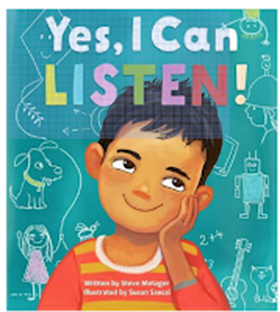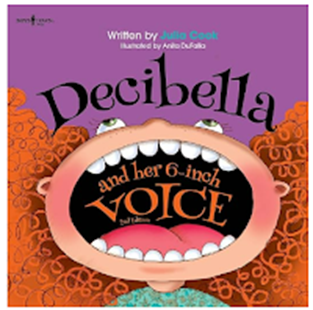Understanding the difference between tattling and reporting is an essential lesson in character education. It helps students discern when to seek help and when to handle situations independently. Here’s a friendly guide to help you teach this important concept in your classroom.
1. Define Tattling and Reporting
Begin by clearly defining tattling and reporting for your students. Explain that tattling is when someone tells on another person to get them in trouble over minor issues, while reporting is when someone tells a trusted adult about a serious issue that needs attention to keep everyone safe.
- Tattling: Trying to get someone in trouble for something minor or petty.
- Reporting: Seeking help to solve a serious problem or keep someone safe.
2. Use Examples to Illustrate the Difference
Provide concrete examples to help students understand the distinction.
- Tattling: "Sarah took the last red crayon, and I wanted it."
- Reporting: "I saw Sarah push Emily on the playground, and Emily is hurt."
Use role-playing activities to act out these scenarios, showing students the appropriate way to respond.
3. Create a Classroom Chart
Develop a visual chart to hang in the classroom that outlines the differences between tattling and reporting. Include questions for students to ask themselves before they decide to tell an adult:
- Is someone in danger?
- Is someone hurt?
- Is someone being treated unfairly or bullied?
- Is it a problem that I cannot solve on my own?
4. Teach Problem-Solving Skills
Equip students with problem-solving strategies to handle minor issues independently. Teach them to use “I” statements, negotiate, and seek peer mediation. Reinforce the idea that not all problems require adult intervention.
Example problem-solving phrases:
- "I feel upset when you take my things without asking. Can you please return it?"
- "Let's find a way to share the crayons so we can both use them."
5. Encourage Reporting of Serious Issues
Emphasize the importance of reporting serious issues, such as bullying, violence, or unsafe situations. Assure students that reporting is a responsible action that helps keep everyone safe. Make it clear that they will not be in trouble for reporting genuine concerns.
6. Create a Safe Reporting System
Establish a safe and confidential way for students to report serious issues. This could be a designated “reporting box” where students can leave notes or a specific time during the day when they can talk to you privately. Ensure that students know their concerns will be taken seriously and addressed promptly.
7. Role-Play and Practice
Use role-playing activities to practice distinguishing between tattling and reporting. Create scenarios where students can practice responding to different situations, reinforcing the lessons taught. This hands-on practice helps solidify their understanding.
8. Promote Empathy and Understanding
Encourage students to consider the feelings and perspectives of others. Teaching empathy helps students understand why tattling can be hurtful and why reporting is necessary for serious issues. Use literature and discussions to explore themes of empathy and kindness.
9. Involve Families in the Conversation
Engage families in the discussion about tattling and reporting. Share your classroom definitions and strategies with parents, providing tips on how they can reinforce these concepts at home. A consistent message between school and home strengthens students' understanding.
10. Reflect and Adapt
Regularly reflect on your strategies and their effectiveness. Seek feedback from students on what works and what needs improvement. Be open to adapting your approach based on the needs and dynamics of your classroom.
By teaching students the difference between tattling and reporting, you empower them to handle conflicts responsibly and seek help when it’s truly needed. This not only enhances their character but also contributes to a safer and more supportive classroom environment.
BOOK LIST:
The Tattletale Dragon: A Story About Tattling and Telling
The Tattletale Dragon by Kathryn Harper is a charming and educational book that addresses the common issue of tattling among young children. The story revolves around a little dragon named Danny, who constantly tattles on his friends for every minor misbehavior. This leads to frustration and tension among his friends, who feel annoyed and betrayed.
Through Danny's journey, children learn the difference between tattling and telling. The book clearly explains that tattling is often about getting others in trouble for insignificant things, while telling is about reporting serious issues that involve safety or well-being. With the help of a wise mentor, Danny begins to understand the impact of his actions and learns when it's appropriate to speak up and when to handle things on his own.
The illustrations by Carla Espana are vibrant and engaging, bringing the characters and their emotions to life. The story is simple yet effective, making it easy for children to grasp the concepts presented.
Overall, The Tattletale Dragon is an excellent resource for parents and educators to teach children about responsible communication and the importance of considering the consequences of their words. It promotes a balanced approach to handling conflicts and encourages a more thoughtful and empathetic way of interacting with others.
A Bad Case of Tattle Tongue is a humorous and insightful children's book that addresses the issue of excessive tattling. The story centers on a young boy named Josh who loves to tattle on his classmates for every little thing. His constant tattling earns him the nickname "Tattling Tattletale" and alienates him from his friends.
One night, Josh has a strange dream where he encounters the Tattle Prince, who gives him a vivid and uncomfortable "tattle tongue" every time he tattles unnecessarily. Through this dream, Josh learns about the Tattle Rules, which help him distinguish between unnecessary tattling and important telling. These rules teach Josh that telling is appropriate when someone is in danger, someone could get hurt, or when something is really important and cannot be solved by himself.
With newfound understanding, Josh starts applying the Tattle Rules in real life, transforming his relationships and becoming more mindful of his actions.
Julia Cook's engaging storytelling and Anita DuFalla's lively illustrations combine to make this book an effective tool for teaching children about the differences between tattling and telling. It encourages children to think before they speak and to use their judgment to foster a more supportive and harmonious environment.
Don't Squeal Unless It's a Big Deal is an engaging children's book that explores the topic of tattling and helps kids understand when it's appropriate to tell an adult about a problem. The story takes place in Mrs. McNeal's classroom, where a group of young piglets are learning the difference between minor issues and major concerns.
The piglets, like many young children, are quick to tattle on each other for every little thing. Mrs. McNeal teaches them the "no squealing" rule, encouraging them to handle small problems on their own and to seek help only for big deals, such as situations where someone might be hurt or in danger.
Through various humorous and relatable scenarios, the piglets begin to understand and practice this important distinction. The book's playful illustrations by Jackie Urbanovic add charm and humor, making the lessons more memorable for young readers.
Jeanie Franz Ransom's Don't Squeal Unless It's a Big Deal is a valuable resource for parents, teachers, and caregivers. It provides children with clear guidelines on handling conflicts and promotes a balanced approach to communication, emphasizing the importance of both independence and responsibility.
Buy on AMAZON: at Don't Squeal Unless It's a Big DealMiles McHale, Tattletale is a delightful children's book that addresses the issue of excessive tattling in a fun and relatable way. The story follows Miles McHale, a young rooster who constantly tattles on his classmates for every minor infraction. His frequent tattling annoys his friends and disrupts the classroom environment.
Miles's teacher, Mrs. Snitcher, decides to implement the Tattle Battle to help the students understand when it's appropriate to report something and when it's better to handle it on their own. Through various classroom activities and discussions, Miles learns the difference between tattling and telling, understanding that telling is important when someone's safety is at risk or when there is a serious problem.
As Miles applies these new lessons, he becomes more considerate and learns to solve small issues independently, improving his relationships with his classmates and creating a more harmonious classroom atmosphere.
Christianne C. Jones's engaging storytelling, combined with Elina Ellis's charming illustrations, makes Miles McHale, Tattletale an effective and enjoyable tool for teaching children about responsible communication and the importance of distinguishing between minor issues and significant concerns.
Buy on AMAZON: at Miles McHale, TattletaleArmadillo Tattletale is a charming and humorous children's book that explores the consequences of tattling through the adventures of a mischievous young armadillo. The story is set in the Southwestern desert and follows a curious armadillo who loves to spread stories about other animals. His constant tattling and gossiping cause trouble among his friends and disrupt the harmony of their community.
One day, Armadillo hears a secret and can't resist the urge to share it. However, as his stories grow more exaggerated, they start causing bigger problems. The other animals become frustrated with Armadillo's behavior and decide to teach him a lesson. Through their clever plan, Armadillo learns the importance of keeping secrets and the difference between harmless fun and harmful gossip.
Helen Ketteman's engaging narrative and Keith Graves's vibrant illustrations bring the desert setting and its animal inhabitants to life, creating a captivating story that resonates with young readers. Armadillo Tattletale teaches children about the value of trust, the impact of their words, and the importance of being considerate and respectful in their interactions with others.
Buy on AMAZON: at Armadillo TattletaleDon't Call Me a Tattletale! is an insightful children's book that tackles the delicate issue of tattling and the importance of standing up for what's right. The story follows a young girl named Claire, who struggles with being labeled a tattletale by her classmates whenever she reports something wrong or unfair.
Through Claire's experiences, the book explores the distinction between tattling and telling. Claire learns that it's important to tell an adult when someone is hurt, in danger, or being mistreated, but that it's also important to handle minor issues independently. With guidance from her parents and teacher, Claire gains confidence in discerning when to speak up and when to resolve things on her own.
Kristen Girard's thoughtful narrative, paired with Cee Biscoe's warm and expressive illustrations, makes Don't Call Me a Tattletale! a valuable resource for children, parents, and educators. The book encourages children to develop empathy, responsibility, and the courage to act when necessary, while also promoting a balanced approach to communication and problem-solving in their daily lives.
Buy on AMAZON: at Don't Call Me a Tattletale!VIDEO LIST:
For more ideas and resources on character education, visit my blog, Lanie’s Little Learners, where I share creative, hands-on activities that promote active learning and character development. Let’s work together to nurture responsible and empathetic individuals who can make a positive impact in our world.

















